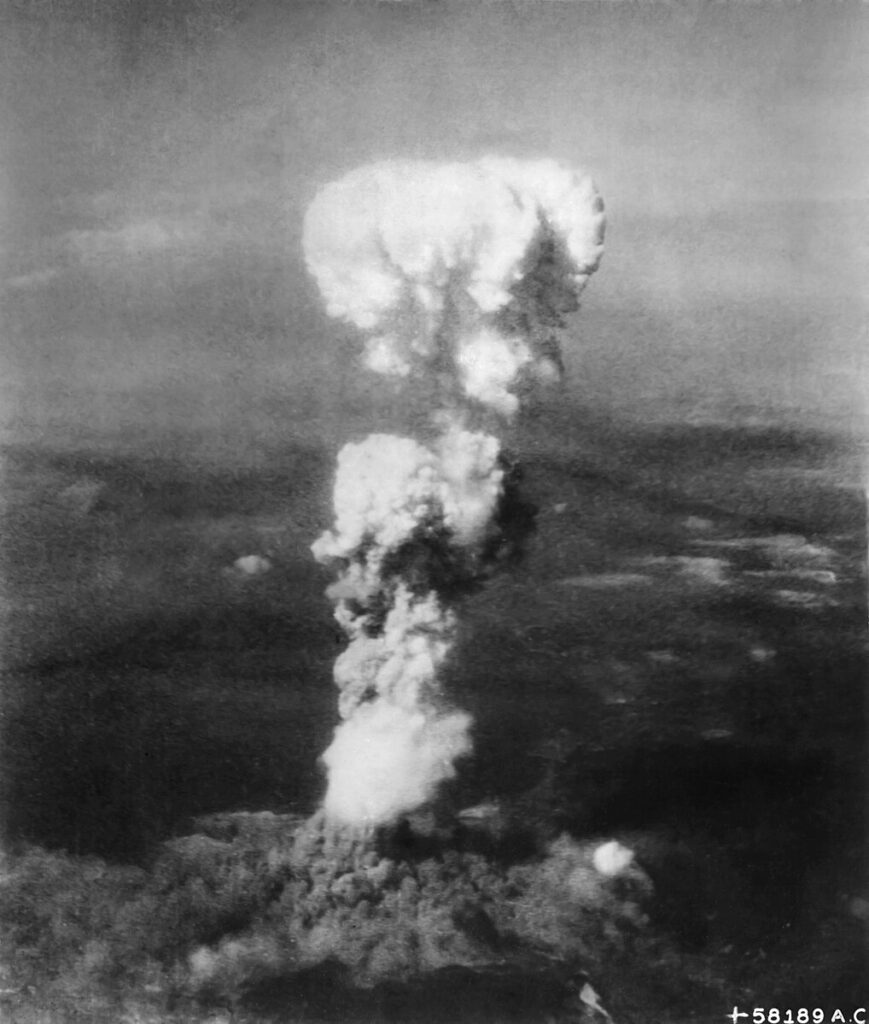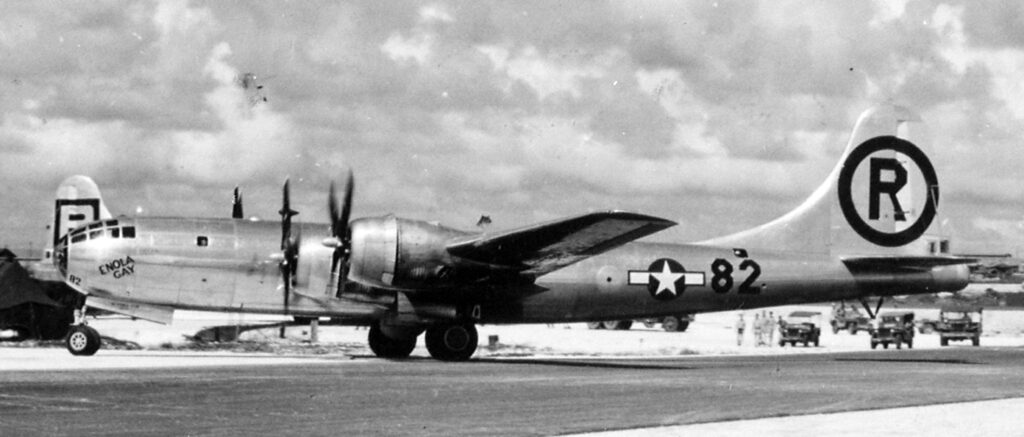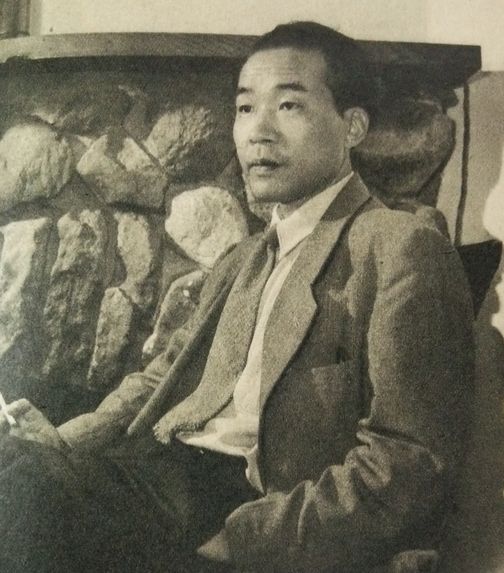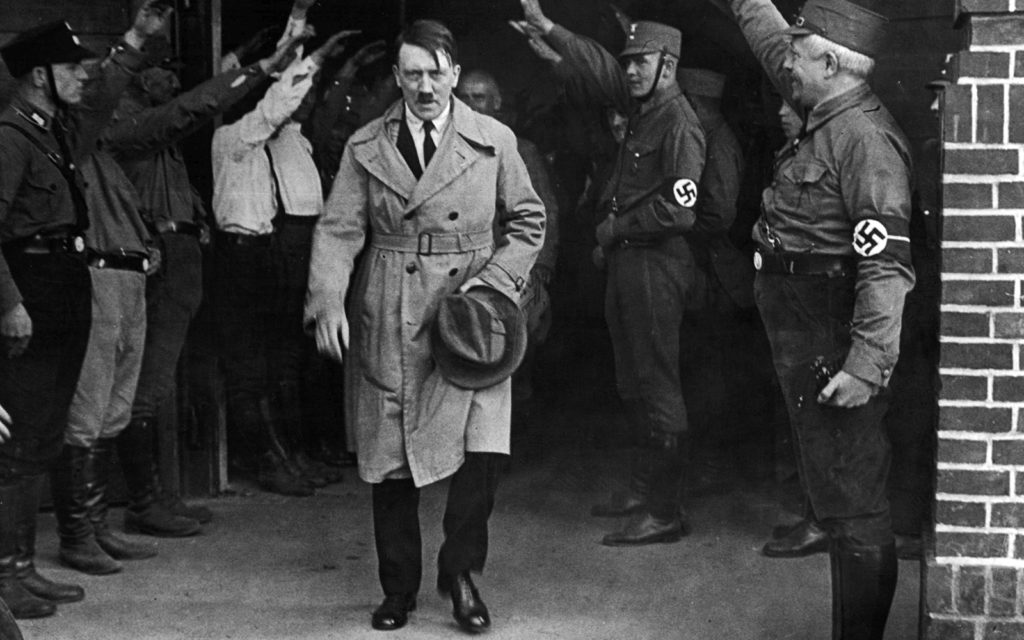Over the course of three years during World War II, the United States developed a new form of warfare: the atomic bomb. It was developed through a massive secret project explored in the recent box office hit Oppenheimer.
After testing the first bomb at Los Alamos on July 16, 1945, the US military immediately began to decide what sites in Japan they would target with the new weapon to force a surrender as soon as possible.
After careful consideration, they decided on two remaining manufacturing cities as targets: Hiroshima and Nagasaki. It would be less than a month before the second atomic bomb was dropped, this time against an Axis power.

A Dark Day in Hiroshima
It was a clear day on August 6 1945 in Hiroshima when Tsutomu Yamaguchi left work. He had been in Hiroshima for three months on a business trip for Mitsubishi Heavy Industries.
While the project Yamaguchi was working on involved a new design for an oil tanker, all of the industry in Japan had been involved in the war effort to some extent. This was part of the reason Hiroshima was a target.
When Yamaguchi prepared to return home that day after three long months, he did not know what tragedy he was about to face. As he walked towards the company shipyard, he heard the buzz of a large plane overheard and looked up.
An American B-29 plane named the Enola Gay after the pilot Paul Warfield Tibbets Jr.’s mother, was flying over the city. It dropped two objects attached to parachutes.
Yamaguchi recalls noticing the plane and the parachutes. Just as he wondered what they were, there was a bright light that lit up the sky, blinding him.

Yamaguchi recalls noticing the plane and the parachutes. Just as he wondered what they were, there was a bright light that lit up the sky, blinding him.
The parachuting package was an atomic bomb called Little Boy. It detonated about 2000 feet above the city.
The following sonic boom and shockwave rocked Yamaguchi, flinging him through the air, burning most of his exposed body, and rendering him temporarily deaf. He was less than two miles from the center of the explosion.
When he woke up, the sun was blotted out by the rising mushroom cloud above the city. After spending a long night with two coworkers who also survived in an air shelter, the three made their way to a remarkably still-operating train station in the city.
Their journey was a dystopian image: dead bodies and fires littered the broken facades of shattered buildings. When they finally arrived at the station, they joined a crowd of other injured people making their way out of the city, returning home to the city of Nagasaki.
His survival that day was nothing short of a miracle. The following day, the world witnessed the President of the United States Harry Truman announce a new nuclear age and unveil the weapon that had leveled a city just days before.
Over 80000 people died instantly from the bomb. Tens of thousands more would die or suffer due to injuries, radiation, and burns over the following weeks and months.
It was an unprecedented level of destruction for a single weapon. Japan had no idea that the United States planned to drop a second one.
The Second Bomb Drops
As Yamaguchi returned to Nagasaki he sought treatment for his wounds\. The burns on his face and hands were so intense that a childhood friend who treated him barely recognized him.
As he returned home swaddled in bandages, his own family barely recognized him either. Despite his injuries though, he returned to the office on August 9.
Unbeknownst to him though, the US was preparing to drop another bomb on Japan as he made his way to work. While talking to a Mitsubishi director about the bombing in Hiroshima, Yamaguchi saw a recognizable flash through the window and dropped down before the shockwave hit the building.

Just three days after experiencing an atomic explosion in Hiroshima, Yamaguchi was once again within two miles of the epicenter of another atomic bomb.
The bomb dropped on Nagasaki was more powerful than the one dropped on Hiroshima. Luckily, the geography of the city and the way the building was constructed had kept Yamaguchi safe within the office.
Although he was hit with another wave of radiation, he was not blown away or scorched the way he had been in Hiroshima. Instead, he was able to quickly make his way home where he feared the worst for his family.
After seeing a part of his house blown in, he feared the worst. But he soon learned that his wife had taken their daughter to find new fresh bandages for his wounds and had hidden in a tunnel after the explosion.
In the following days, the radiation that Yamaguchi was exposed to began to exert its negative effect. His hair fell out and he vomited excessively, but he managed to survive the worst of it.
Yamaguchi returned to his normal life, which included translating for the US military during their occupation, teaching, and continuing at Mitsubishi. As a victim of an atomic bombing, he is entitled to a monthly allowance, free health checkups, and even funeral costs. Over a quarter of a million people are also entitled to similar benefits.
Yamaguchi avoided talking about his experiences for nearly half a century. He instead put his feelings into writing, including poetry and a memoir he published in 2006.
He then began traveling and speaking about his experiences to support nuclear disarmament. He then earned the official title of “twice-bombed person” from the Japanese government, the only person to earn such a title despite there being others who also survived both bombs.
Yamaguchi then passed away at 93 in 2010.
References
Andrews, Evan. “The Man Who Survived Two Atomic Bombs,” The History Channel, August 10, 2023. https://www.history.com/news/the-man-who-survived-two-atomic-bombs.
McCurry, Justin. “A little deaf in one ear – meet the Japanese man who survived Hiroshima and Nagasaki.” The Guardian, March 24, 2009. https://www.theguardian.com/world/2009/mar/25/hiroshima-nagasaki-survivor-japan.

